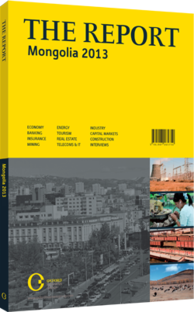OBG talks to U. Jalsa, President & CEO, Nomadic Expeditions

Interview: U. Jalsa
What do you believe still needs to be done to promote Mongolia more effectively?
U. JALSA: There are agencies like the National Tourism Organisation and the Mongolian Tourism Association, as well as the newly appointed minister of tourism. It will be important to increase communication between the different entities in order to benefit from each other’s learning curves and come up with the best strategy to market Mongolia more effectively, as it has such a variety to offer. A clear focus has to be put on sustainable tourism. Furthermore many tour operators still do not have an office abroad, which makes marketing more difficult. Mongolian tourism has mainly developed through laissez-faire activities led by the private sector; the government needs to get more involved. The potential of tourism can be neglected and it will be important to diversify revenue streams into other sectors than mining. Hospitality and tourism is the largest commercial service sector industry in the world, employing more than 260m people, and indirectly contributing $6trn to global GDP. Mongolia has a lot of potential given its natural diversity.
Which tourism areas should Mongolia focus on and how do operators cope with high seasonality?
JALSA: Mongolia is not a high-volume tourism destination. Instead it should be a high-priced destination. Bringing more affluent travellers and trying to create a high-end infrastructure for them will be more beneficial for both travellers and Mongolians. The high seasonality of Mongolian offerings, which only attracts visitors three months per year, poses another challenge to tour operators. The immediate focus has to be on extending that season as much as possible by adding more events and attractions. Even if you have a camp that runs with 100% occupancy during that period, it is only 25% annualised, so the typical financial models do not apply. The only way around this is to create high-end tourism and focus on a niche market similar to Bhutan, where visitors spend several thousands of dollars per night. Mongolia needs to create its own identity in that respect, and heavy investments in infrastructure are needed to justify such a price range. Physical properties in the five-star category already exist, but the quality of service still has room for improvement. Education and guide training are important. It is, however, very difficult to compete with mining companies that pay better salaries for qualified people. In the next two years big names like the Hyatt will come to Mongolia but there is still room for more boutique hotels. Also, Asian tourists will remain highly important for Mongolia, namely Japanese travellers.
How does the Mongolian tourism experience differ from that in other countries and what needs to be done to preserve this heritage?
JALSA: About 30% of the population still lives as traditional nomadic herders, and it is important to preserve that lifestyle accordingly. Times have changed in the last two decades and you have to remember that the only consistent thing in life is change. Mongolia can either be the victim of that change or direct the change in the desired way. In that respect, Mongolia’s biggest advantage is its deep commitment to hospitality. In the nomadic way of life you would never turn anybody away from food or shelter. President Ts. Elbegdorj has even developed a reputation as the “nomadic president” – his parents were herders – so the way of living with each other has been passed on between generations. Chinggis (Genghis) Khan was the greatest emperor in the world and for centuries there has been a kind of mystery about who the Mongolians really are. We have to market this mystery accordingly, and sustainable ecotourism will have a role to play here.
Mongolia aims to dedicate to conservation a higher percentage of its surface area – one-third – than any other nation. The Gobi National Park is approximately 100,000 sq km and there are around half a dozen rangers to control it, so the government needs to increase funding for protection and conservation.
You have reached the limit of premium articles you can view for free.
Choose from the options below to purchase print or digital editions of our Reports. You can also purchase a website subscription giving you unlimited access to all of our Reports online for 12 months.
If you have already purchased this Report or have a website subscription, please login to continue.

